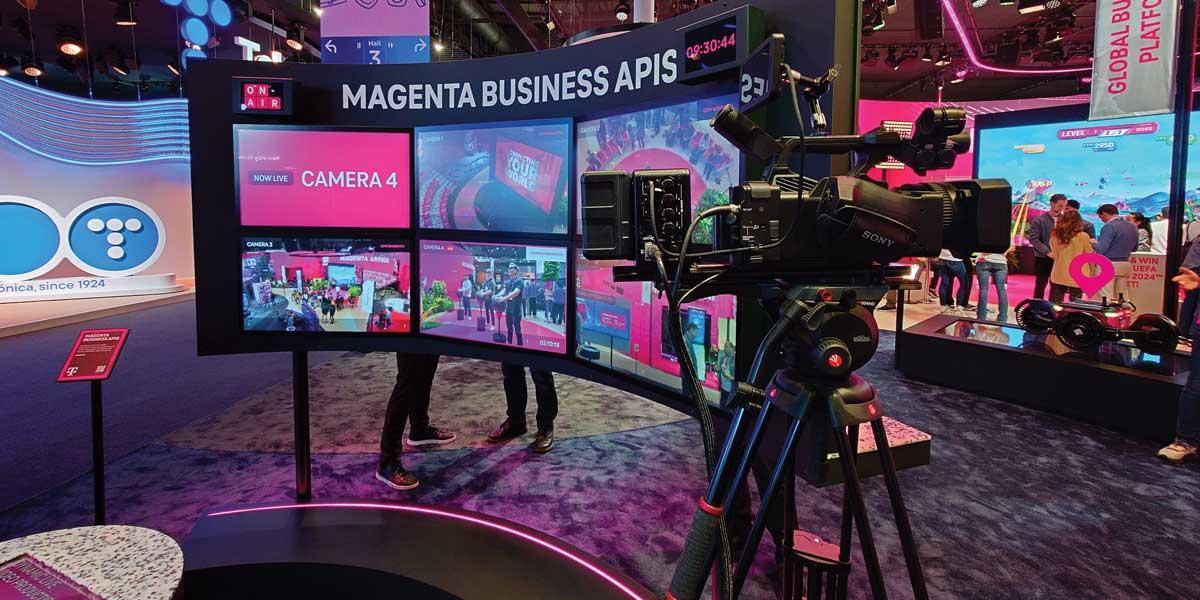Trial and success
Along with mobile network operator (MNO) Deutsche Telekom, Sony and subsidiary Nevion recently tested 5G network APIs made to enhance live TV production

Sponsored editorial
With several high-profile technology trials and collaborative projects under its belt, not to mention many related product developments, Sony continues to push the boundaries of what’s possible in live media production using the evolving capability of 5G technology.
Now its presence in this exciting area has expanded once again with a new 5G test involving Deutsche Telekom and Sony subsidiary Nevion.
Described as ‘hugely successful’, the trial centred on the use of Nevion’s VideoIPath – a media orchestration platform which combines network orchestration and broadcast control capabilities. The vendor-agnostic and highly scalable system supports hybrid workflows across SDI and IP, enabling a seamless transition toward IP-optimised networks as the move away from legacy workflows accelerates.
For the new trial – details of which were published by the MNO in February 2024 – Nevion’s smart bandwidth management capabilities and Sony’s ultra low-latency video compression network technology were deployed with access to Deutsche Telekom’s 5G stand-alone (SA) network and optimised through network application programming interfaces (APIs).
The APIs adhered to standards set by Camara – the open-source network API project within the Linux Foundation – of which Deutsche Telekom is an active member.
The trial was conducted on a 5G SA test bed – situated in Deutsche Telekom’s lab environment in Krakow, Poland – and utilised two of Sony’s most significant 5G-related solutions to date.
Central to the workflow was the CBK-RPU7 HEVC 4K/HD remote production unit, which combines efficient, ultra-low-latency encoding with exceptional picture quality.
This new device, attached to the camera, reduces the very high data rates of the video stream to those more suited to uplink to a 5G network.
Also part of the workflow – and fixed to cameras used in the trial – was Sony’s latest 5G innovation: the PDT-FP1 portable data transmitter with 5G, mmWave and sub-6 capabilities for sustained high-speed transmission of video and still images from Sony cameras.
Integrating optimal antenna design, heat dissipation structure and versatile input interfaces, it delivers high-speed and stable communication that caters to professional demands, all while offering simple operability.
Both devices complemented the solution by enabling cameras to connect to Deutsche Telekom’s advanced 5G network, with ease of operation, low latency and consistently high quality.
Meeting production needs
The success of the trial confirmed that – with the correct selection of technologies – it is possible to achieve optimised latency and bandwidth.
This is a priority for live media productions, including those in sports that typically involve large camera configurations in densely crowded environments, such as stadiums.
Reflecting on the trial, Claudia Nemat, board member for technology and innovation at Deutsche Telekom, states: “Live TV with multiple cameras means high technical requirements. 5G SA simplifies this kind of complex media production. As an example: standardised, programmable interfaces ensure low latency times and stable bandwidths. In combination with 5G modems and innovative data compression, the quality of service can be adapted to optimise particularly important video signals. This makes broadcasting operations even more efficient. Together with our partner Sony, we have successfully tested this 5G innovation.”
Peter Sykes, strategic technology development manager at Sony Europe, echoes these sentiments and alludes to the long-term potential for 5G in demanding live productions. “The scope for 5G to become an extremely important technology for complex live applications is clear, but it’s vital that broadcast customers know they can ensure reliable and robust connectivity, ensuring critical video signals are prioritised when required.
“The trial with Deutsche Telekom has emphasised the crucial role of 5G technology and its future evolution in creating more efficient broadcast operations to advance live production,” Sykes concludes.
For more on the Sony/Nevion/Deutsche Telekom trial, please visit: telekom.com/en/media/media-information/archive/successful-test-of-live-tv-production-via-network-api-1060876
This sponsored editorial was first published in the Spring 2024 issue of FEED.
